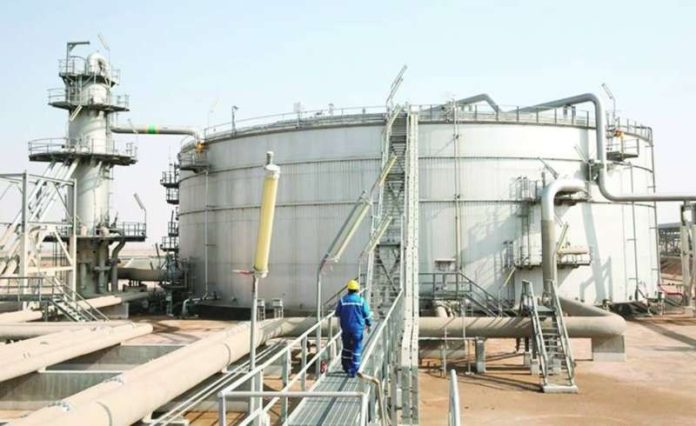To reduce the maintenance time of the Kuwaiti oil storage tanks a working team from the Kuwait National Petroleum Company has been formed to overcome the negatives and challenges that accompany the process of cleaning tanks manually by introducing effective, safe and environmentally friendly solution.
The sources pointed out to a working paper presented during the ‘Hackathon’ workshop organized by the KNPC under the title ‘Refineries Challenge’, talked about the mechanism that the work team works to rely on for the ‘automatic’ cleaning system that uses one equipment to perform the entire process, without the involvement of the human element, meaning a worker going to the tank.
The source said the automatic cleaning process depends on determining the quantity and components of the sludge (sediment) and its distribution areas at the bottom of the tank, through the use of what it called the ‘acoustic probes’ devices, as this technology can predict the sludge pattern with an accuracy of up to 95 percent, which facilitates the pre-planning process for resources required to be processed.
The sources indicated that before the start of the automated cleaning; a number of treatment units are installed near the tanks, including a nitrogen generation unit, a control room, a unit for separating oil from solids, and a unit for separating oil from water, in addition to installing the necessary pipes, and connecting all these equipment to the tank; punching holes in the roof of the tank using “safe cold methods” to install spray nozzles and nitrogen supply pipes, noting that the cleaning process begins with dissolving the sludge at the bottom of the tank and pulling it out, then spraying the walls of the tank with water to prepare it for the inspection and maintenance process.
After that, the adsorption unit withdraws the remaining sludge from the bottom of the tank using suction pumps, centrifugal pumps, and a circulation feeding unit mixed with cleaning media, which completely dissolves the sludge and facilitates its withdrawal from the tank, and here begins the role of the final sludge separation unit.
As for the skimming unit, the sources indicated that its function is to fully clean by pumping water to remove the remaining oil from the walls and bottom of the tank, and eventually opening the holes to ventilate the tank after the cleaning process is completed.
Regarding the gains from automated cleaning, the sources stressed that the “mechanization” constitutes an optimal, safe, effective and environmentally friendly solution instead of the many procedures accompanying the maintenance of about 500 tanks in the Mina Abdullah refinery, for example, explaining that it helps reduce tanks downtime, without the need to increase the cost on current practices, while this process achieves a high rate of oil recovery from sludge up to 98 percent.
The sources added that the process of removing, cleaning, separating, transporting sludge and recovering oil all take place within one circle, and in the vicinity of the same tank, without the need to transfer the sludge to other treatment units.
The sources stated that the challenge lies in the necessity of emptying the oil tanks to clean their walls of the thick, dense layer that was deposited during the storage of oil before re-stocking them again, which requires stopping the storage of oil and closing it in order to clean it.
The sources reported that the process of cleaning and emptying tanks in the traditional way goes through several steps, starting with stopping the pumping of oil into the tank, moving the sludge until its density decreases as much as possible, so that the pipes can empty as much of it as possible before transferring it to the treatment unit.
The sources considered that the mechanization of tank cleaning addresses the problems and challenges facing the manual cleaning process of oil tanks, the most prominent of which are:
1 – Consuming a long time in the implementation of the process without the results being the required efficiency.
2 – Using a lot of equipment and manpower.
3 – Executing works in a closed place that generates high risks related to health, safety and the environment.
4 – Workers having to wear heavy and bulky personal protective equipment, including special respirator
5 – Manual sludge displacement needs to use high pressure water.
6 – The cleaning process is limited to a short time, which requires constant replacement of workers.
7 – The oil recovery rate is not high in manual cleaning.
8 – The production of a large amount of waste and spills accompanied by negative repercussions on the environment.
9 – Transferring the sludge resulting from the process and treating it in another place designated for that.

















